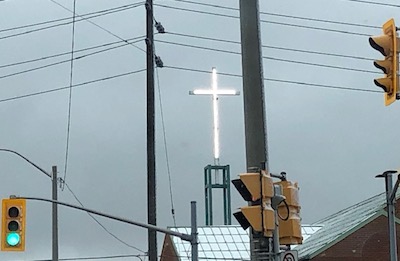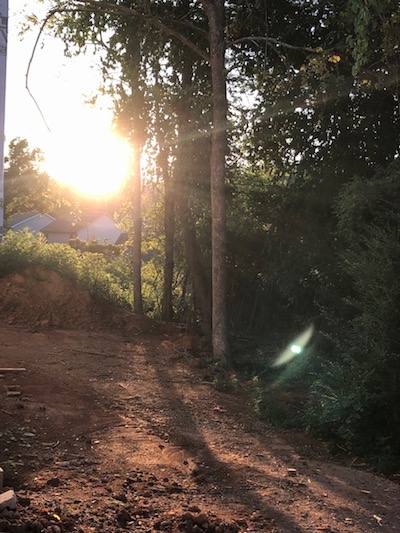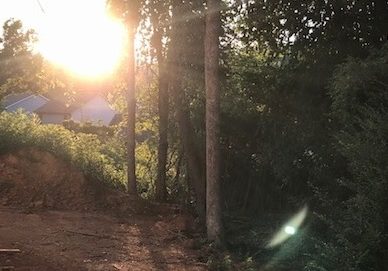This sermon (or a reasonable facsimile) was preached on the Sunday after Easter, April 8, 2018, at Kingsway Baptist Church. The texts are 1 John 1:1 – 2:2 and Luke 24:13-35. (One is from the Revised Common Lectionary, because Baptists are part of the larger Church; the other is not, because Baptists are free to do their own thing.)
And so we come to the Sunday after:
After the processionals, the baptisms, and the choir anthems are all complete.
After all the Easter dinners have been eaten, all the Easter dresses packed away, all the Easter Eggs found (except for that one you’ll find with the lawnmower in a month or so).
After the pastor has finally consumed enough coffee to start to feel human again. (I think that happened sometime yesterday morning). Many pastors aren’t even preaching today. In some circles, the Sunday after Easter is only half-jokingly referred to as “National Associate Pastor Sunday.”
But not me. For better or worse, not me.
I like preaching the Sunday after Easter, even if I am stumbling through a post-Easter haze. In part, I like it because it always strikes me that today is actually closer in mood and expectation to that first Easter. We’re not grieving and trying to piece together the shards of our dashed hopes, as the first disciples were, but nonetheless today is a letdown. We do up Easter like the original Palm Sunday – and well we should, because Easter is the real triumph. Still, I find it the discrepancy intriguing if not ironic.
But mainly I like preaching on the Sunday after Easter because a seminal and pressing question hangs over this day: “Now what?”
Truth be told, it’s simply back to business as usual for most of us, most of the time. Except it can’t be. Not really.
Not if we’ve really heard the testimony of the women. Not if we’ve really been to the Tomb and seen for ourselves. Not if we’ve really looked into the gaping mouth of that grave and felt the warmth of life tickling our cheek where there should have been only the chill of death. Not if we’ve really glimpsed the light that shines in the darkness that the darkness does not overcome.

The scenery might all look the same: our neighbours and neighbourhoods; our offices and co-workers. The faces and places of life may not have changed. The roads of our lives may lead to the same places and may be as jammed with traffic as ever. But underneath, all of it is different – fundamentally different – because in all those neighbourhoods, along all those streets, in corporate high-rises, behind humble storefronts – everywhere in this world – the Risen Christ is roaming free. And this Risen Christ beckons us to do more than see the light of the Empty Tomb; do more than celebrate the mystery and the miracle of what has occurred by God’s grace.
The Risen Christ bids us to respond to the light, to step into the light, to embrace the light.
Seeing the light and responding to the light are two very different things. Seeing the light without responding is like looking out the window at the dawning of a warm, sparkling, beautiful new day at the beach – but choosing to stay in your hotel room, to keep walls and windows between you and the breeze, the sky, the sun. (And as we’ll see next week, the Risen Christ has no respect for walls.)
Jesus calls us to step out into this new dawn, to experience what the light of Easter fosters and reveals, to bathe in this light, to become bearers of this light, agents of this light.
This is the point that the First Epistle of John seeks to drive home: we’re called to walk in the light, not simply to admire it. Yes, it is important to recognize that God is light and in God there is no darkness at all. But once we recognize that reality, once we profess that reality, we are called to reflect that reality in the living of our own lives. Because, First John declares, we cannot with any integrity claim to have fellowship with this God who is light and continue to walk in darkness.
If we say that we have fellowship with him while we are walking in darkness, we lie and do not do what is true…. (1 John 1:6).
This Easter light must come to dwell in us, to shine through us.
These are the stakes of the Christian pilgrimage. This is the mission of the church: to bear witness to the light and reality of Easter, of the God who is light, and do so with integrity: as witnesses who can and will be believed when we offer our testimony.
So, as a church, as an extension of THE Church, we don’t get to celebrate Christ’s resurrection and then ride off into the sunset because our work here is done – no matter how glorious, intentional, meaningful, well-planned, well-coordinated, and well-executed our celebration of Easter may have been. (And I must say, I’ve celebrated Easter with a lot of churches for a lot of years, and last Sunday here at Kingsway was pretty special.) Even still, that’s just the beginning!
We don’t get to ride off into the sunset. We get to ride into the sunrise – to bathe in the light of this glorious new dawn, to absorb it; to begin a new journey that we didn’t even know was possible prior to Easter morning: the journey from the cross; from the cross into new frontiers of love, grace, and life now that Christ is risen and victorious.
“We don’t get to ride off into the sunset. We get to ride into the sunrise – to bathe in the light of this glorious new dawn, to absorb it; to begin a new journey that we didn’t even know was possible prior to Easter morning: the journey from the cross; from the cross into new frontiers of love, grace, and life now that Christ is risen and victorious.”
And like any journey, this one unfolds over time: step by step, day by day.

But the good news (always!) isn’t just that the Risen Christ roams free, through the streets, on the expressways, in the alleyways of this world. The good news is that wherever the people whom God loves – loves enough to give God’s only Son – wherever the people whom God loves are, the Risen Christ is to be found. This journey into the light, this process of becoming light, is never a journey we undertake alone or exclusively under our own strength.
This reassuring truth is the beauty that lies at the heart of the story we refer to as “The Road to Emmaus” – the post-Resurrection experience of Cleopas and another, unnamed disciple.
We meet these two companions on a road leading away from Jerusalem after Passover, after Easter – perhaps, for them, one of those ol’ familiar roads. A stranger joins them – and they tell him all about what has taken place, about what happened to Jesus of Nazareth. They even tell him what the women have reported: that Jesus’ tomb is empty.
They’ve heard the news, but they haven’t seen the light much less embraced it. “We had hoped that he was the one to redeem Israel” (Luke 24:21).
So they’re going back to whatever it was they knew before. Except they can’t – because Jesus won’t let them. Because Jesus is roaming free, right there on that very road, right there with them, even though they don’t recognize Him in their midst.
And what does Jesus do? He walks them through it: literally and figuratively. He walks with them as they travel, wrestling with their disappointment and disillusionment. He also walks them through the Scriptures. He lays it out: explains everything they’ve seen, heard, read. He shines new, Easter light on all of it. He helps them start to understand.
Then He breaks bread with them – and that is when their eyes are opened: while they are reunited with Him around the table, in the context of sharing hospitality with Him, a man they thought was a stranger – and an off-putting one at that. A stranger who had rebuked their conclusions. “Oh, how foolish you are, and how slow of heart to believe all that the prophets have declared!” (Luke 24:25).
Still they invited Him in, because it was getting late. We have to wonder: if Cleopas and the unnamed disciples had let Jesus go on, would He have? Would they have missed the revelation they received?
Ultimately, we can only speculate. What we can be certain about is that this willingness to linger, to see the humanity in this stranger, to think after his safety and well-being supplied the setting for Christ to reveal Himself in their midst; created an opportunity for them to see by the light of Easter.

So, now what? It’s not that we shouldn’t return to business as usual; shouldn’t return to our old, familiar neighbourhoods and offices; our old, familiar routines. We should. The difference is that we should walk then with the golden light of this new Easter dawn illuminating our steps, and illuminating the faces of the people we meet along the way.
So, now what? We must allow Easter to impact how we see and receive the unreasonable client…. The woman with the walker ahead of us in line who is moving so, so slowly …. The man sleeping on the grate in the dead of winter…. The person talking out loud to themselves on the subway…. The neighbour whose political views we simply cannot fathom…. The friends we know and love already…. The strangers we’d prefer not to have to get to know, much less love. Because the free-roaming, Risen Christ is there with them, with us; in them, in us – if we’re willing to look, and give ourselves time and opportunity to see.
It’s a process, and one that will unfold one step and one day at a time; but it starts with the willingness to step out into the warmth of life that now flows from the Empty Tomb. To come out from behind our walls. To absorb as well as see the light of Easter. To carry it with us wherever we go. To allow the Risen Christ to walk us through: to open our minds and open our eyes.
Today is not the day we ride off into the sunset, and neither is tomorrow. Each new day now becomes a day to ride off into the dawn. Because Easter is a morning, not an evening. Easter is a beginning, not an ending. The journey is really just getting started.
Thanks be to God. Amen.































